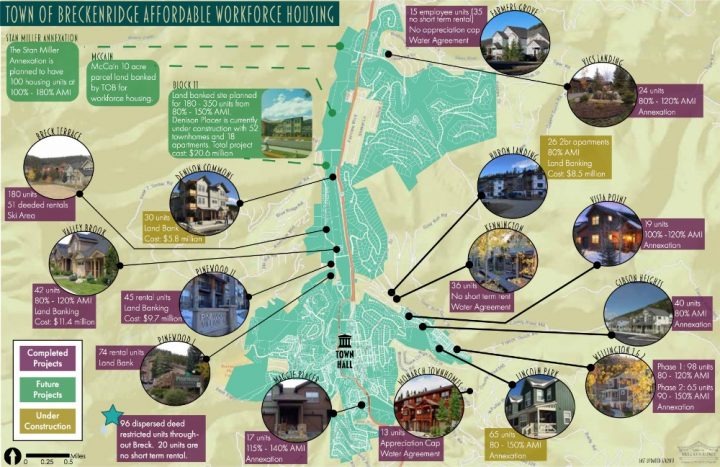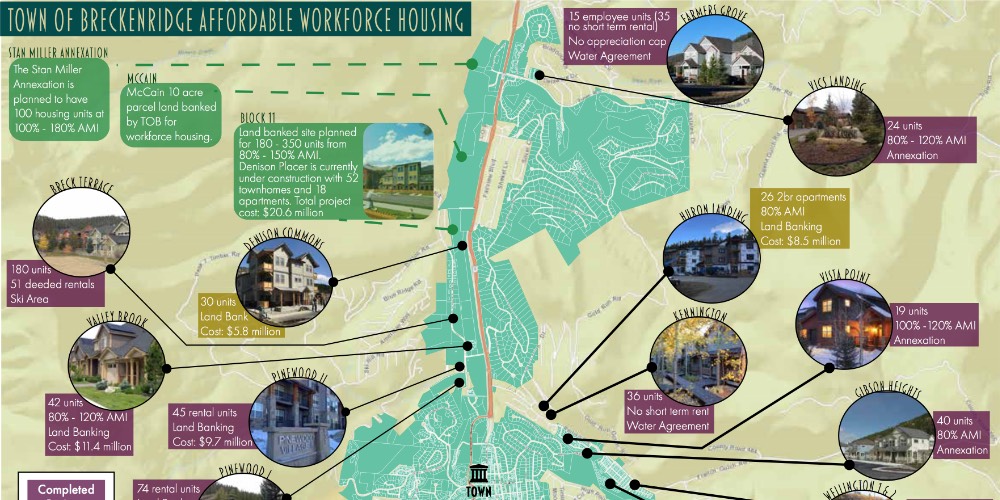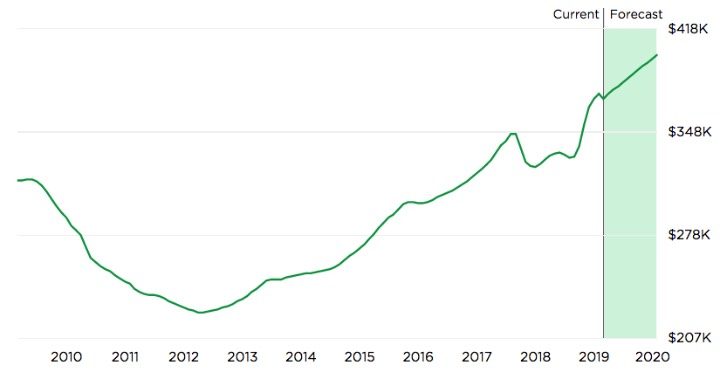“Unless you do it, no one else is going to do it. We control our destiny.”
Peter Adams, chair of the Pagosa Springs Town Planning Commission, offered those comments to the Town Council during his public comments at the March 5 meeting. He was referring to his conversation, earlier that same morning, with Breckenridge CO senior planner Laurie Best. During that earlier conversation, he learned that the Breckenridge government had, itself, taken on the job of building some of the community’s new affordable housing projects.
Unless the Town government does something here in Pagosa Springs, no one else will step up. That was Mr. Adams’ assertion.
According to the Town of Breckenridge website, it appears that about 75% of the existing “deed restricted housing” has resulted from private public partnerships.
ACCOMPLISHMENTS
The Town of Breckenridge has been successful in using a variety of techniques to achieve our housing goal. By providing incentives including free density, annexation fee waivers, no plant investment fees for water service, building permit fee waivers, real estate transfer tax exemption, and positive points for other non-workforce housing projects. In addition to these tools, the town has worked in private public partnerships to develop approximately 75% of the existing deed restricted housing.
The following is a list of projects that serve the Breckenridge community by providing workforce housing.
Wellington Neighborhood & Lincoln Park (230 ‘for sale’ homes – under construction)
Moose Landing (36 affordable apartments – under construction
BRECK365 (100-112 affordable apartments – under construction)
Blue 52 (52 ‘for sale’ townhomes – completed 2018)
COTO Flats (18 affordable apartments – completed 2018)
Huron Landing (26 affordable apartments – completed 2017)
Denison Commons (30 affordable student housing rentals – completed 2017)
Pinewood II (45 low-income apartments – completed 2016)
Maggie Placer (9 ‘for sale’ townhomes – completed 2015)
Valley Brook Neighborhood (41 ‘for sale’ townhomes – completed 2012)
Vic’s Landing (24 ‘for sale’ condos – completed 2008)
Monarch Townhomes (13 ‘for sale’ townhomes – completed 2005)
Vista Point (18 ‘for sale’ homes – completed 2004)
Gibson Heights (40 ‘for sale’ homes – completed 2003)
Pinewood Village (74 affordable apartments – completed 2001)
Farmer’s Grove (35 ‘for sale’ homes – completed 2001)
Breckenridge Terrace (180 apartments – completed 2000)
Kennington Townhomes (36 ‘for sale’ townhomes – completed 1999)
As we can see, more than half the projects listed above have been built since the Great Recession. That’s a total of about 600 deed restricted dwelling units built or under construction, since 2012.

But even with all of this success, Breckenridge housing remains basically unaffordable. From their website:
There is a $254,498 gap between the median sales price of a single-family home and the price that is affordable for a family earning 100% of the area median income…
In his speech to the Town Council on Tuesday, Mr. Adams was implying that no one was going to solve our Pagosa housing crisis, unless our government leaders step up and lead the way.
He was also expressing his frustration that such significant leadership was not yet taking place.
We then heard from local activist Andre Redstone. But before I quote Mr. Redstone, I’d like to share a little chart from the Zillow.com website:
This chart shows the median price of a home in Pagosa Springs, offered for sale. Back in 2010, the median price was around $300,000. The average market price fell steeply during the Great Recession, due largely to the number of Pagosa homes that had gone into foreclosure and were being unloaded by banks and mortgage lenders. By 2013, the trend reversed, and the current projections by Zillow show a median offering price of about $400,000.
Nearly double the price from mid-2012.
I can’t vouch for this data, of course. Zillow is a national company with its own way of calculating median prices. I suppose a local real estate company could produce a similar chart, which might be more accurate. But it might not be. At any rate, I haven’t yet found such a chart, done locally.
What we might find interesting is the correlation between the steeply rising sales prices and the employment picture in Pagosa Springs. A few business and government employers in the community increased their payroll between 2010 and 2018. In some cases, the increase was dramatic.
In April 2015, a new Walmart store opened, and hired about 200 employees. That store had been wooed enthusiastically, by the Town and County governments.
During the 2010s decade, the tax-supported Pagosa Springs Medical Center was undergoing a rather amazing growth spurt, growing from an organization of maybe 20 people to a staff of more than 200 people.
I figure, between those two organizations, we added close to 10 percent to the number of wage-earners working in Archuleta County. But we did not add anywhere near 10 percent to our workforce housing stock. In fact, we added basically zero workforce housing.
Thus: a housing market described by Zillow this month as “Very Hot.” Very hot, and totally unaffordable for working folks.
During that same period, our local governments were aggressively promoting the tourism industry, and having considerable success. Lodgers tax collections — made possible by some of our lowest paid workers — zoomed from about $477,000 in 2010 to a projected $890,000 for 2019.
Pretty close to double? Like our housing prices?
I guess my point is, that actions by our local governments have helped create a housing crisis in Archuleta County. Will those same governments now step up and help us solve that problem?
Andre Redstone seemed to be asking essentially that question, as he began his public comments to the Town Council on March 5.
“I want to be able to speak frankly, and not have any feelings bruised here.
“So you’ve made a motion to adopt this [PHP ‘Roadmap to Affordable Housing’ report.] One of the central components that stood out for me, when I read through this ‘Roadmap’ was the target, between now and 2025, we want to build 100 affordable housing units.
“Well, some of you may or may not know, because it was offered quietly — but to Mr. Adams’ point [about government involvement] — the property behind Walmart was very discretely offered to you, the Town, to do this very thing…”


